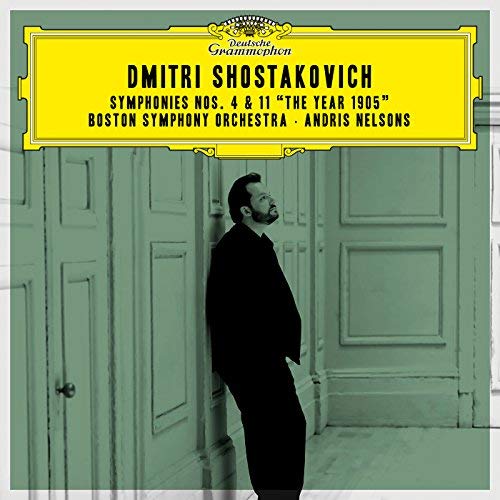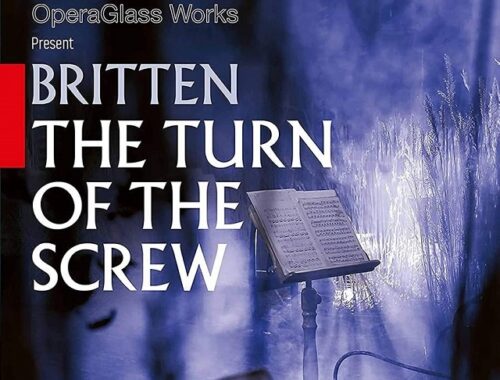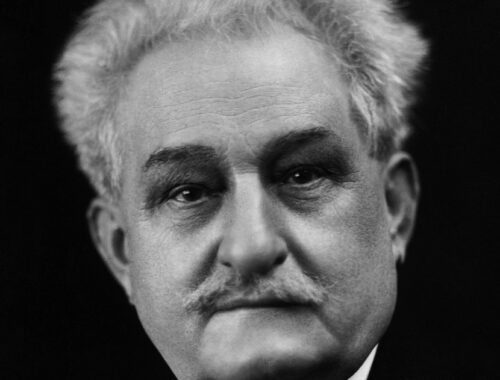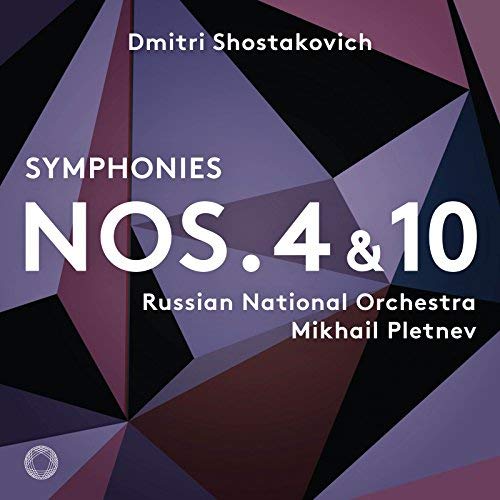GRAMOPHONE Review: Shostakovich Symphonies 4 & 11 – Boston Symphony Orchestra/Nelsons
 This Nelsons cycle started with a bang – namely the most electrifying recording of the Tenth Symphony we’ve had in almost half a century. The excellence continues. In dramatic contrast to Mikhail Pletnev’s intriguing but decidedly odd account of the Fourth Symphony, Nelsons roars into the opening march with a lethal precision that makes Pletnev sound positively flabby. Where Pletnev plainly had a point to make about the crass inanity of that march, there is nothing funny about Nelsons’ vigorous goose-step. In fact, over the course of the first movement Nelsons shaves almost eight minutes off Pletnev’s 34-minute running time.
This Nelsons cycle started with a bang – namely the most electrifying recording of the Tenth Symphony we’ve had in almost half a century. The excellence continues. In dramatic contrast to Mikhail Pletnev’s intriguing but decidedly odd account of the Fourth Symphony, Nelsons roars into the opening march with a lethal precision that makes Pletnev sound positively flabby. Where Pletnev plainly had a point to make about the crass inanity of that march, there is nothing funny about Nelsons’ vigorous goose-step. In fact, over the course of the first movement Nelsons shaves almost eight minutes off Pletnev’s 34-minute running time.
Put bluntly, if you can’t see the wood for the trees in this first movement then you lose all sense of its symphonic imperative. Nelsons rejoices in the skewed logic and dotty tangents but does so with a gripping hold on the symphonic argument – tentative though that sometimes is. The impetus and tautness of his account intensifies cohesion. And it is fabulously engineered: a very real sense of the famed Symphony Hall, Boston, acoustic in depth and perspective but with a startling clarity and immediacy, all that hyperactive percussion and Mahlerian brass really making its presence felt.
And it surprises in that inimitable Nelsons way. The distracted string fugue which springs from nowhere at the heart of the first movement is truly a panic attack tearing off at a tempo at the very edge of possibility.
A keen sense of irony pervades, too: that curious second movement culminating in the now iconic ticking percussion, the grim bathos of the third movement funeral march with its pall-bearing bassoons, the Petrushka-like divertissements which are here such an unsettling departure because Nelsons makes them so insanely charming (yes, even the solo trombone’s earnest ariosa). Of course (and this will have irritated Stalin’s henchmen as surely as the work’s “radicalism”), the final timpani-driven climax (thrillingly terraced) could hardly be more anti-heroic. Nelsons gets that. And he surely gets the inconsolably desolate coda, too, the icy celeste aimlessly repeating the same phrase over and over.
Symphony No 11 “The Year 1905” (probably my favourite of the cycle for all kinds of reasons) seems to start where the Fourth left off – yet another winter of discontent in Russia’s troubled history. This failed revolution prompts such fervour from the composer (unapologetically pictorial it may be but it is deeply and disarmingly spiritual, too) and what moves me above all is the way in which his choice of simple revolutionary songs make up the thematic fabric of the piece keeping faith with the cause through trauma after trauma.
Nelsons makes the icy chordings of the opening tableau – ‘The Palace Square’ – sound almost hymn-like, the recollection of two prison songs intensifying the pathos of a movement with so little and yet so much on the page. The violent disruptions of ‘The Ninth of January’ are suitably seismic – not least the ferocious fugue (again pushed to extremes tempo-wise) which unleashes the ‘Bloody Sunday’ carnage. The rising chromatic trombones sneer so malevolently, the sabre-rattling percussion tattoo is implacable, and the shimmer of ‘silence’ which is left hanging in its wake induces a flicker of disbelief in one’s ears.
The power of this music is in its directness, its subtext, its emotional memory. And the sombre processional invoking ‘Eternal Memory’ – the emotional heart of the symphony – could hardly be truer to everything that gives it its universal appeal. The way in which the music turns harmonically towards its gloriously consonant and affirmative climax is just one instance of the composer telling you exactly what he is feeling. The hopefulness is inescapable. But so is the heartache.
Nelsons, of course, could hardly be more incisive rhythmically as he and his magnificent orchestra (gosh he has transformed the Boston Symphony in such a relatively short space of time) march for the cause in the finale. But then comes that long cor anglais oration (the instrument stretching painfully into its highest register) summing up all the heartache that has gone before and will surely come again – and the shadow of Mussorgsky’s Boris looms as the unrest seethes again and the dissonant major/minor clang of bells – terrifically vivid here – are at one and the same time a call to arms and a death knell for the Motherland. Thrilling music, thrillingly realised.
You May Also Like

GRAMOPHONE Review: Britten The Turn of the Screw (DVD) – Soloists, OperaGlass Works, Sinfonia of London/Wilson
10/01/2022
GRAMOPHONE: From Where I Sit – Awards 2020 Issue
11/11/2020

